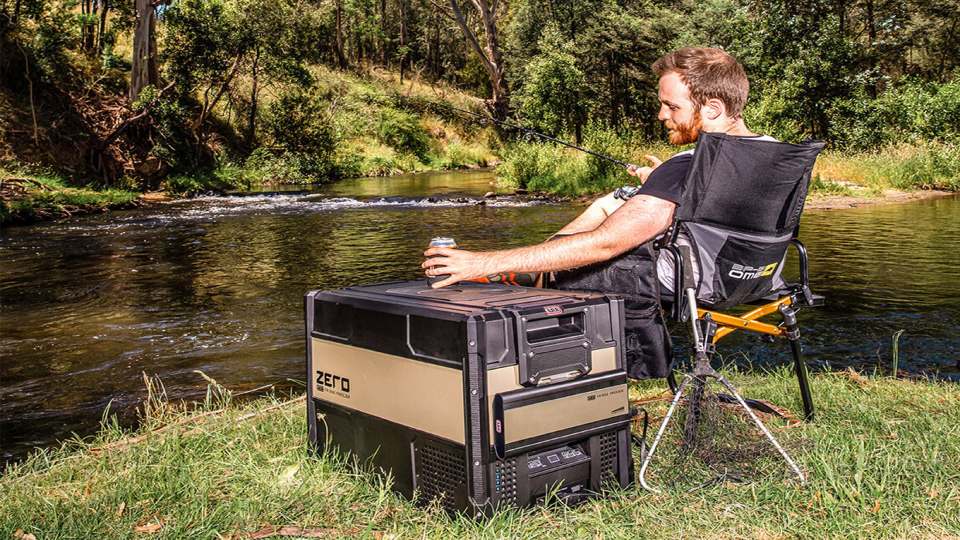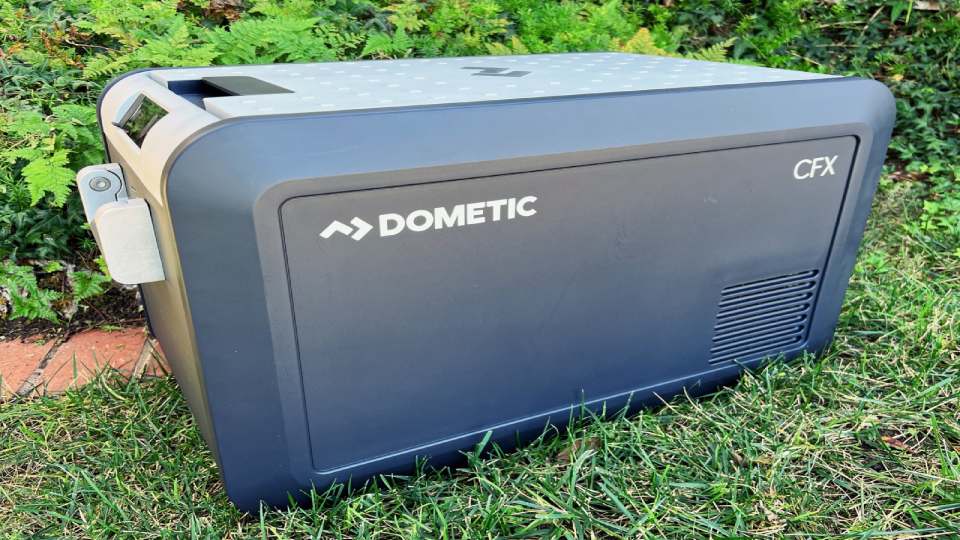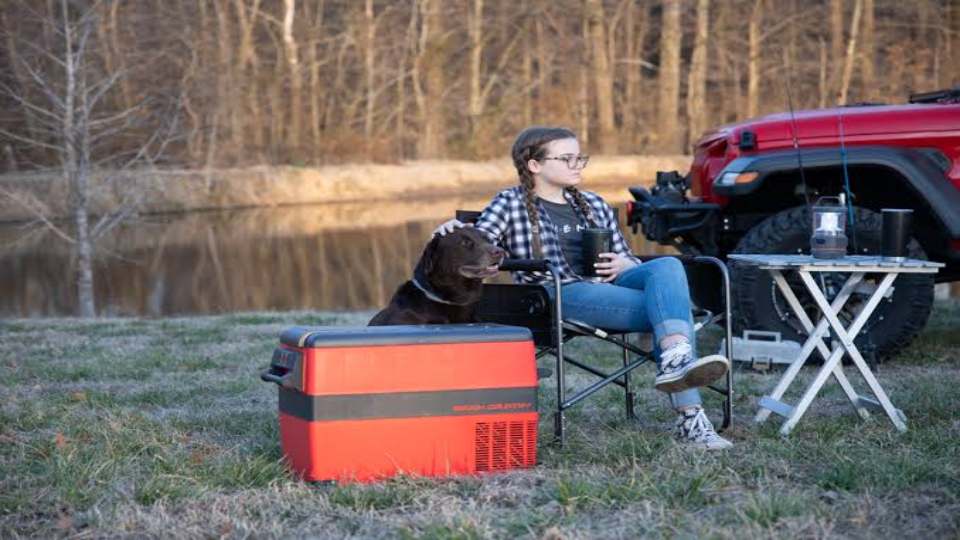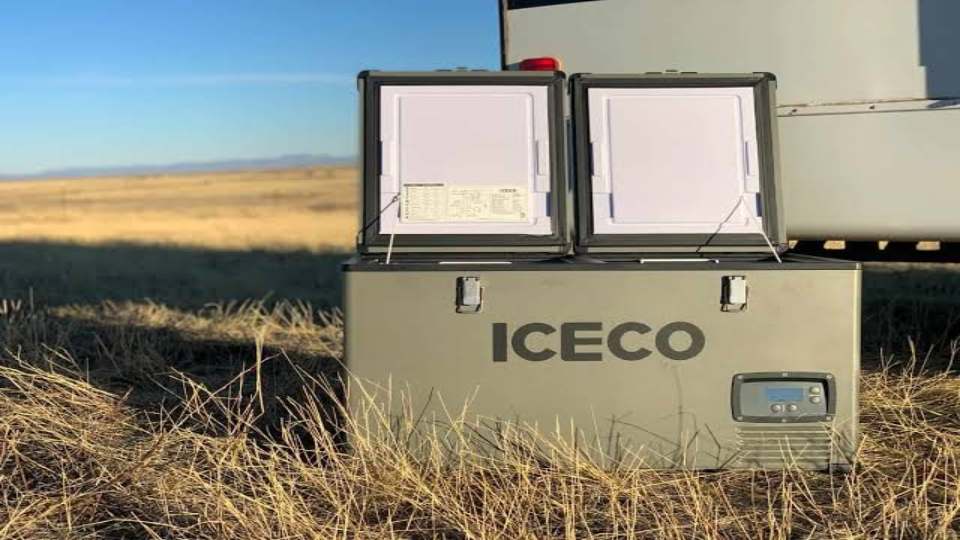Best Camping Fridge 2026: Long-Run Battery Life Picks for Off-Grid Adventures
A high-quality camping fridge is a game-changer for outdoor adventures, road trips, and van life. Whether you’re keeping fresh produce chilled, storing beverages for a long weekend, or freezing meals for extended camping trips, the right fridge ensures your food stays safe and drinks stay cold. It’s one of the key camping essentials that every adventurer should have.
With so many options available in 2026, finding the best camping fridge can feel overwhelming. This guide showcases the 5 best camping fridges in Australia, explains what features to look for, and shares practical tips to help you get the most out of your fridge—whether you’re after a compact single-zone model or a dual-zone fridge and freezer combo.
5 Best Camping Fridges in Australia in 2026
1. EcoFlow GLACIER Classic Portable Fridge Freezer
The EcoFlow GLACIER Classic is a premium dual-zone fridge and freezer, perfect for keeping fresh and frozen items separate. Available in 35L, 45L, and 55L sizes, it can store up to 90 cans of 330ml soda. The high-efficiency copper wire compressor cools quickly while conserving power, and the 298Wh plug-in battery supports up to 43 hours of off-grid operation. Smart app control and versatile charging options make it ideal for camping, road trips, or van life.
2. ARB Zero 12-Volt Portable Fridge Freezer (47QT)
The ARB Zero features dual, independently-controlled cooling zones and a removable compartment divider. Its Bluetooth-enabled wireless monitoring and variable-speed compressor provide precise temperature management, while the tough steel casing and recessed carry handles make it durable for rough outdoor use. With both AC and dual DC power inlets, it’s compatible with a wide range of setups.


3. Dometic CFX3 35 Portable Refrigerator (36L)
The Dometic CFX3 35 is a compact yet powerful fridge, holding up to 50 cans. Its rugged ExoFrame construction and aluminum handle make it suitable for adventurous trips. With deep-freeze capability down to –7°F, 3-stage battery protection, and Active Gasket Technology, it ensures energy-efficient cooling. The CFX3 app allows you to control temperature and monitor performance directly from your phone.


4. Rough Country 45L Portable Refrigerator / Freezer
The Rough Country 45L comes with a split compartment design, allowing you to use it as both a fridge and freezer. Featuring an LG compressor, fluoride-free insulation, and a battery protection system, it’s suitable for both home and vehicle use. Electronic temperature controls, a built-in LED light, and low energy consumption make it a reliable choice for camping trips.


5. ICECO VL60 60L Dual Zone Metal Fridge Freezer
The ICECO VL60 offers a spacious 60L dual-zone compartment, accommodating up to 89 cans. Its SECOP compressor and impact-resistant design make it durable for rough outdoor conditions. Dual power options (12/24V DC and 110–240V AC) provide flexibility for vehicle and home use, while fast cooling and dual-zone temperature control ensure optimal storage for both fresh and frozen items.


What to Look for When Choosing the Best Camping Fridge
Choosing the right camping fridge is key for any outdoor trip, keeping food fresh, drinks cold, and even medications safe. Here’s what to consider when selecting the best one for your needs.
1. Capacity
Match fridge capacity to your trip and group size. 20–35 L suits solo or short trips; 45–60 L or more is ideal for families or longer adventures. Larger units offer more storage but use more space and power.
2. Fridge Type: Chest vs Vertical
Chest fridges: Open from the top, minimizing cold air loss and saving energy—great for off-road trips. Bottom items are harder to reach.
Upright fridges: Easier to organize but less energy-efficient and may struggle in hot conditions.
3. Power Source and Efficiency
Most camping fridges run on 12V DC, compatible with car batteries, dual-battery setups, or solar panels. Some also support AC for home use. Energy-efficient compressors or ECO modes help maximize runtime.
4. Portability and Size
Consider weight, dimensions, and portability. Handles or wheels make transport easier. Ensure enough ventilation space to maintain cooling efficiency.
5. Build Quality and Durability
Choose sturdy materials like stainless steel or reinforced plastics. Vibration-resistant compressors and tight seals maintain stable temperatures on rough terrain.
6. Additional Features
Look for extras like digital displays, adjustable temperatures, dual-zone compartments, removable baskets, LED lights, or app control. Dual-zone fridges let you store fresh and frozen foods separately.
7. Budget Considerations
Portable fridges cost more upfront than traditional coolers but provide consistent cooling, durability, and energy efficiency.
Tips for Setting Up and Getting the Most from Your Camping Fridge
To get the most out of your camping fridge, proper setup and smart usage are just as important as choosing the right model. Follow these practical tips to keep food cold when camping and save power.
1. Pack Strategically
Load your fridge in reverse order of consumption. Place items you’ll use first on top, so you don’t have to open the fridge unnecessarily. Minimizing door openings helps maintain consistent temperatures and reduces energy use.
2. Pre-Chill Food
Whenever possible, cool your food and drinks before placing them in the fridge. This reduces the workload on your fridge and keeps it operating efficiently. For frozen items, transfer them from the freezer to the fridge the night before to thaw gradually.
3. Use Baskets and Containers
Baskets and compartments improve airflow inside the fridge and prevent items from sticking to the walls. Packing food in airtight containers also keeps odors contained and prevents spills.
4. Maintain Proper Airflow
Never block the vents or crowd the fridge too tightly. Air circulation is essential for even cooling, and blocked vents force the fridge to work harder, consuming more power.
5. Optimize Temperature Settings
Adjust the temperature according to your needs. There’s no need to always set it to the coldest setting. Slightly higher settings can save power while still keeping food fresh. For long trips, set the freezer colder during transit and switch to an economical setting once at camp.
6. Protect Your Fridge
Keep your fridge out of direct sunlight and, if necessary, cover it with a protective or insulating cover. This not only protects it from physical wear but also improves energy efficiency in hot conditions.
7. Secure During Travel
Always strap your fridge down when on the move. Unsecured fridges are vulnerable to bumps and vibrations, which can damage both the unit and your stored food.
8. Use Efficient Power Connections
Thicker power cables reduce resistance and improve energy delivery to your fridge. Make sure your battery or power station is compatible with your fridge’s voltage requirements to prevent interruptions.
9. Maintain Regular Care
Clean your fridge after each trip with mild soap, dry it thoroughly, and leave the door slightly open during storage to prevent mold and odors. Check power cables and seals regularly for wear and tear.
10. Keep It Full, But Not Overloaded
A well-packed fridge retains cold more effectively than an empty one, but overloading can block airflow and reduce efficiency. Strike a balance for optimal cooling.
11. Smart Habits During Hot Conditions
If you’re camping in high temperatures, placing a damp towel (not dripping) over the lid or keeping cans rather than bottles can help maintain cooler temperatures inside.
Conclusion
Choosing the best camping fridge ensures your food stays fresh and safe, whether for a solo weekend or a family trip. Smart setup and usage—like packing strategically, maintaining airflow, and using efficient power—maximize efficiency. A quality camping fridge is more than convenience; it’s a reliable companion for worry-free outdoor adventures.
*The brands referenced in this article are provided for informational purposes only and do not indicate any partnership with EcoFlow.
FAQs
What type of fridge is best for camping?
For camping, compressor fridges are generally the best choice. They can reach lower temperatures quickly, maintain consistent cooling, and work efficiently in hot conditions. Dual-zone models offer both fridge and freezer compartments, giving you more flexibility. Chest-style fridges are more energy-efficient, while upright fridges are easier to organize. Thermoelectric and absorption fridges can work for mild or off-grid situations, but for most campers, a well-insulated, battery-friendly compressor fridge provides the best balance of performance, energy efficiency, and convenience.
What is the best van fridge in Australia?
The best van fridge in Australia depends on your space and power setup. Compact, dual-zone compressor fridges like the EcoFlow GLACIER Classic or Dometic CFX3 models are popular for vans. They provide reliable cooling, adjustable temperatures, and smartphone app controls for convenience. Look for models with robust construction, low energy consumption, and multiple power input options, including 12V DC and AC. A fridge that fits your van layout, offers sufficient storage, and can operate efficiently on battery or solar power will give you a practical and long-lasting solution for van life.
Is a camp fridge worth it?
Yes, a camp fridge is worth the investment, especially for longer trips or off-grid adventures. Unlike traditional coolers, it keeps food and drinks consistently cold, reduces spoilage, and even preserves temperature-sensitive items like medicine. With proper planning, it can run efficiently on vehicle batteries, solar panels, or portable power stations. While the upfront cost is higher than ice-based coolers, the convenience, food safety, and ability to enjoy fresh meals make it a valuable addition to camping gear, ensuring a stress-free and comfortable outdoor experience.